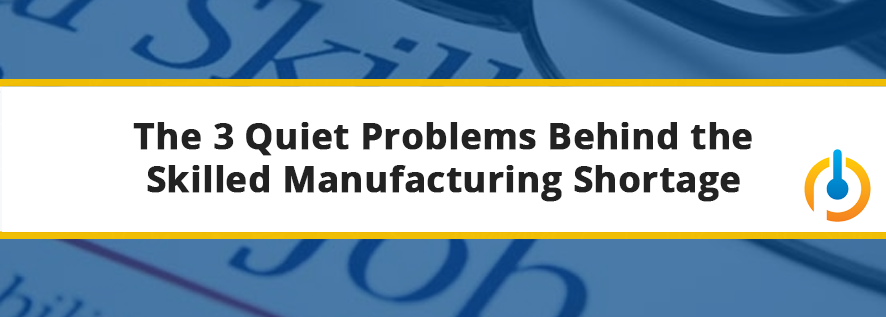
A recent study by Deloitte revealed that the industry will face a shortfall of almost 2 million skilled manufacturing workers in the next decade. That’s a lot of shoes to fill. Unfortunately, manufacturers often aren't sure how to prepare for the gap, especially in a challenging global market. Three recurring problems have been shadowing the industry for a long time, contributing to the shortage companies see today.
1. Ignoring the Talent You Already Have
School partnerships and trade schools are starting to respond to the need for skilled workers with industrial training programs, and some companies are meeting them halfway.
However, manufacturing has also changed drastically with the introduction of automation solutions, and now Industry 4.0 technology like the Internet of Things (IoT) and OEE data analysis.
Even as the upper tier of skilled workers retire and companies are forced to scramble for successors, upcoming engineers and electricians in the workforce right now may not have the experience to support new technologies. But those same workers already have the foundation for sorely needed technical knowledge – just waiting to be tapped.
Continuous education programs and frequent training opportunities give existing employees the chance to grow; and with them, their company.
2. Looking for Results in the Wrong Places
In worst case scenarios, some manufacturers take lean manufacturing to mean cutting corners wherever possible. It’s easy to see the appeal of dressing up tightened budgets with buzzwords. But like crash diets, slashing costs may yield fast results – that don’t last. Lean manufacturing means eliminating inefficiencies, not starving core strengths.
Skilled workers are worth investing in, from entry-level to continuous education. They are the brainpower and ingenuity behind modern industry, and can help companies keep up with advances in technology or outperform the competition.
The instant gratification of driving costs down by any means necessary weakens a company’s resilience and ability to evolve. Instead, protecting the funds reserved for continuous education and investing in a quality team ensures that employees are true partners in the success of a business.
3. Losing Sight of the Long-Term
This problem lives where cost cutting and neglect intersect.
Many companies suffering from the skilled manufacturing shortage want more experienced workers now. But the education system simply doesn’t prepare students for the modern industrial environment, and that won’t change fast enough to close the gap. Manufacturers have to be prepared to train people entering the workforce, rather than expect a complete package with express shipping.
Neglecting training opportunities for new and established workers alike degrades the manufacturing process. Sacrificing investment in the human element costs more than just paying the time and effort up-front. On the other side of the coin, an active and learning workforce appreciates in value over time.
Finding a Partner in Skilled Manufacturing
However a manufacturer chooses to prepare for the road ahead, it can be a long and difficult process. Premier Automation understands the challenges; for over 20 engineers and 30 electricians, Premier Automation invests in continuous education and training to keep the staff up-to-date with the latest technology and best practices.
With a broad portfolio of industrial automation solutions, including AC and DC drive solutions, nationally ranked system integration, electrical controls, custom panel building, system design, retrofits and upgrades, as well as field service, troubleshooting, repair, and more — Premier Automation can meet your needs as a true electrical control partner.
If you're seeking a partner for your next automation or controls project, contact one of our experienced professionals to schedule a free on-site visit. Find out how Premier Automation can deliver innovative answers to your toughest automation questions.


